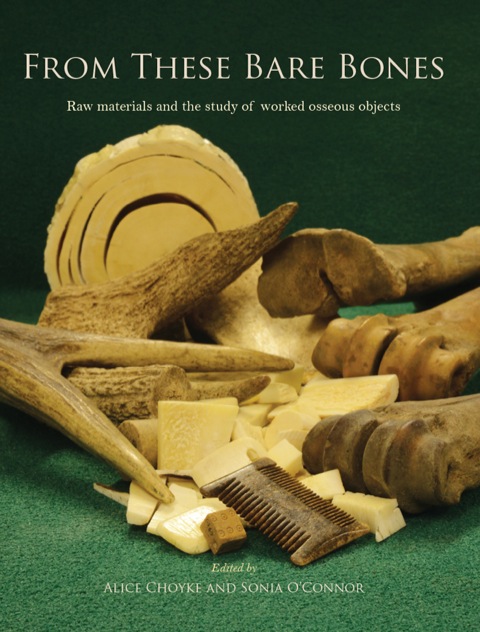

Most ebook files are in PDF format, so you can easily read them using various software such as Foxit Reader or directly on the Google Chrome browser.
Some ebook files are released by publishers in other formats such as .awz, .mobi, .epub, .fb2, etc. You may need to install specific software to read these formats on mobile/PC, such as Calibre.
Please read the tutorial at this link. https://ebooknice.com/page/post?id=faq
We offer FREE conversion to the popular formats you request; however, this may take some time. Therefore, right after payment, please email us, and we will try to provide the service as quickly as possible.
For some exceptional file formats or broken links (if any), please refrain from opening any disputes. Instead, email us first, and we will try to assist within a maximum of 6 hours.
EbookNice Team

Status:
Available5.0
29 reviews
ISBN-10 : 1782972129
ISBN-13 : 9781782972129
Author: Alice Choyke
A fundamental component of the study of worked osseous objects is the identification of the raw materials chosen to make them. In archaeological contexts many objects become degraded to the point where identification is very difficult and the way in which these materials decay during burial and upon excavation can vary greatly. Correct identification is crucial to the investigation of objects, their conservation and future curation. Above all, understanding raw material selection aids our understanding of human-animal interaction in the past both on pragmatic and symbolic levels since the choices made by artisans vary by cultural tradition as well as availability. The 20 papers presented here explore a wealth of information pertaining to the use of osseous materials over the long period of human craftsmanship and tool manufacture by exploring several key themes: · Raw material selection and curation within tool types · Social aspects of raw material selection · New methods of materials identification It is demonstrated that the issue of raw material identification has numerous implications for conservation work, reproduction of objects, the physical characteristics of the tool or ornament, availability of raw materials, the materials chosen for procurement and the cultural reasons that lie behind the choice of raw materials from particular species and skeletal elements to produce planned tool and ornament types. Together, these papers emphasize the need for confident and correct materials identification and demonstrate that functionality is by no means the only, nor necessarily the most important, factor in the selection of osseous raw materials for the fabrication of tools and other cultural objects.
KEYNOTE PAPER
1. Hidden Agendas: Ancient Raw Material Choice for Worked Osseous Objects in Central Europe and Beyond
RAW MATERIAL SELECTION AND CURATION WITHIN TOOL TYPES
2. Osseous Retouchers from the Final Mousterian and Uluzzian Levels at the Fumane Cave (Verona, Italy): Preliminary Results
3. Raw Material used in the Manufacture of Osseous Artefacts during the Portuguese Upper Palaeolithic
4. The Identification of Perishable Technologies through Usewear on Osseous Tools: Wear Patterns on Historic and Contemporary Tools as a Standard for Identifying Raw Materials Worked in the Late Upper Palaeolithic
5. Bone Material and Design Choices in Southern Patagonia
6. Changed into Tools. Camelid Bones from the Southern Calchaquíes Valleys (Formative Period, North-western Argentina)
7. Osseous Raw Materials in the Vinča culture
8. Seals, Seal Hunting and Worked Seal Bones in the Estonian Coastal Region in the Neolithic and Bronze Age
9. Specialization or Re-utilization? Study of the Selection Documented in a Bone-Working Refuse Assemblage from Roman Baetulo (Badalona, Spain)
SOCIAL ASPECTS OF RAW MATERIAL SELECTION
10. The Materiality of Production: Exploring Variability and Choice in the Production of Palaeolithic Portable Art made in Antler and Bone
11. Evidence of Bone Technology on the Santa Fe Pampa Lagoons. The Laguna El Doce Site (Santa Fe Province, Argentina)
12. Beyond Stones: Bone as Raw Material for Tools in the Central Plateau of Santa Cruz, Argentinean Patagonia
13. The Meaning of “Smoothing” Implements from the Levantine PPNB seen from the Basta Perspective
14. Tubular Bone Artefacts in Burial Context at Ajvide, Gotland c. 2500 cal BC. Are They Musical Instruments?
15. Strict Rules – Loose Rules: Raw Material Preferences at the Late Neolithic Site of Aszód, Central Hungary
16. More than Fun and Games? An Experimental Study of Worked Bone Astragali from Two Middle Bronze Age Hungarian Sites
17. Economic and Social Context of Bone Tool Use, Formative Bolivia
NEW METHODS OF MATERIALS IDENTIFICATION
18. Exotic Materials Used in the Construction of Iron Age Sword Handles from South Cave, UK
19. An Introduction to ZooMS (Zooarchaeology by Mass Spectromtry) for Taxonomic Identification of Worked and Raw Materials
20. Some Comments on the Identification of Cervid Species in Worked Antler
bare-bones meaning
the bare bones quizlet
bare-bones definition
these bones
bare-bones
Tags: Bare Bones, Alice Choyke, identification, archaeological